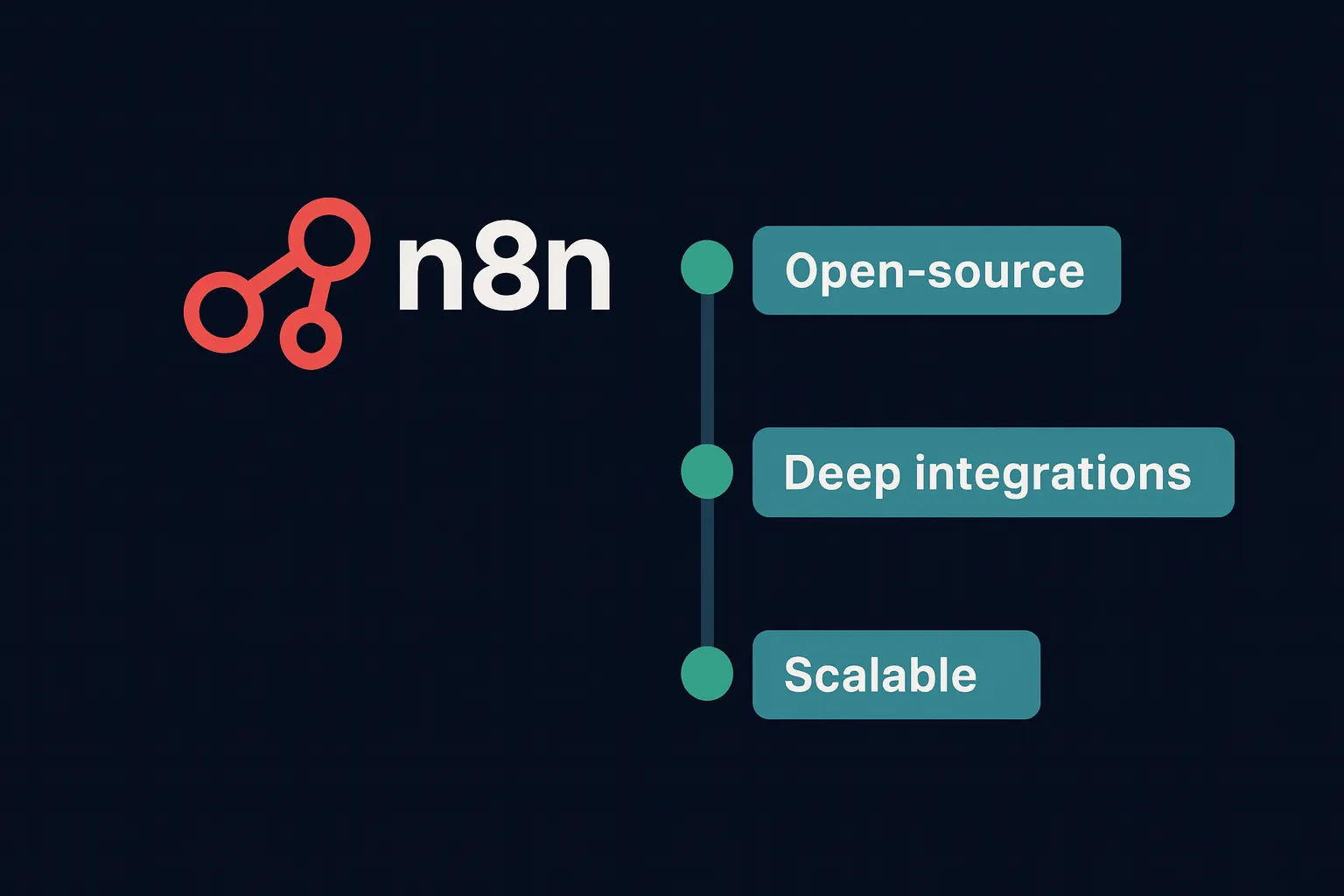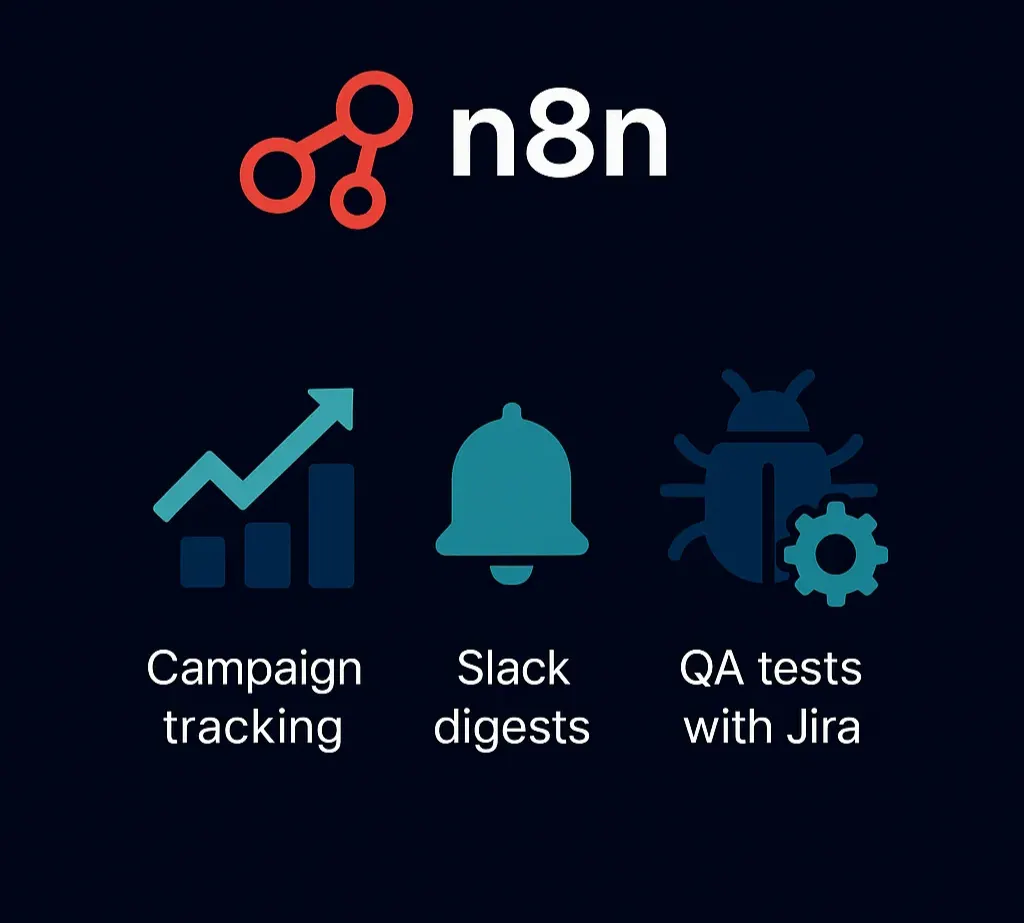Introduction
Every product team hits the same wall sooner or later. Tools multiply, data lives in silos, and repetitive tasks eat into already tight timelines. Marketing needs analytics stitched together, design files need syncing with tickets, QA wants automated bug tracking, and leadership just wants visibility.
The instinct is to throw engineering at the problem—custom APIs, ad-hoc scripts, dashboards that no one maintains. But there’s another way.
Enter n8n, an open-source automation tool that quietly glues workflows together. It doesn’t replace engineering—it frees it up.
What Makes n8n Different?
Low-code automation isn’t new. Zapier, Make, and IFTTT showed the promise years ago. But most tools hit limits fast: shallow integrations, rigid pricing, closed ecosystems.
n8n is different:
- Open-source: host it yourself, extend it however you need.
- Deep integrations: APIs, webhooks, custom nodes.
- Scalable: automate a simple Slack ping or orchestrate a full data pipeline.
It’s automation without handcuffs.

How Product Teams Actually Use It?
For product teams, n8n acts as connective tissue across functions.
- Data syncing: Pipe leads from web forms straight into CRM, ping Slack with high-value signups, log everything in Notion for visibility.
- QA automation: Auto-create Jira tickets when a bug report lands, attach logs or screenshots, and notify the dev channel instantly.
- Marketing workflows: Sync campaign data to Sheets and GA4, push alerts when KPIs cross thresholds, generate quick-share dashboards.
- Design & feedback loops: When a Figma file is updated, create a review task automatically and notify stakeholders.
Each flow removes tiny points of friction. Together, they compound into speed.
A Quick Case Snapshot
One team used n8n to handle campaign tracking. Instead of manually exporting GA4 data into a report each week, n8n pulled events nightly, filtered for key KPIs, and generated Slack digests every Monday morning.
What once burned 4–5 hours of manual work now took zero. The marketing team spent their Mondays on strategy instead of spreadsheets.
Another case: QA engineers wired n8n to listen for test failures, enrich logs with browser/device info, and push structured bug reports into Jira. Developers got clean tickets without context lost, and QA saved hours chasing details.

Why “Glue” Is the Right Word
Most product teams don’t need one more massive platform. They need a way to make existing tools stick together.
n8n acts like glue:
- Holding disparate systems in place.
- Closing gaps where APIs don’t fully talk.
- Keeping workflows moving without constant manual oversight.
It’s not flashy. That’s the point. Like good glue, you only notice it when it’s missing.
Limits to Know
n8n isn’t a silver bullet.
- Complexity ceiling: Sometimes, custom code is still the faster, cleaner choice.
- Hosting & ops: Self-hosting means maintaining uptime and updates.
- Learning curve: Flexible power means it takes longer to master than Zapier.
But for teams balancing speed with control, the trade-offs are usually worth it.
Conclusion
Product teams thrive when they can focus on building, not on duct-taping workflows.
n8n doesn’t shout. It quietly clears the clutter: syncing data, automating repetitive work, and giving teams room to move faster. It’s underestimated because it isn’t glamorous—but it’s exactly the kind of glue that holds product organizations together.
For teams tired of context-switching and firefighting, n8n isn’t just an automation tool. It’s a force multiplier.
And here’s the best part: you don’t have to figure it out alone. Our team has already helped product and marketing organizations weave n8n into their daily stack—whether it’s stitching analytics pipelines, automating QA flows, or reducing launch-week chaos.
Oct 16, 2025
